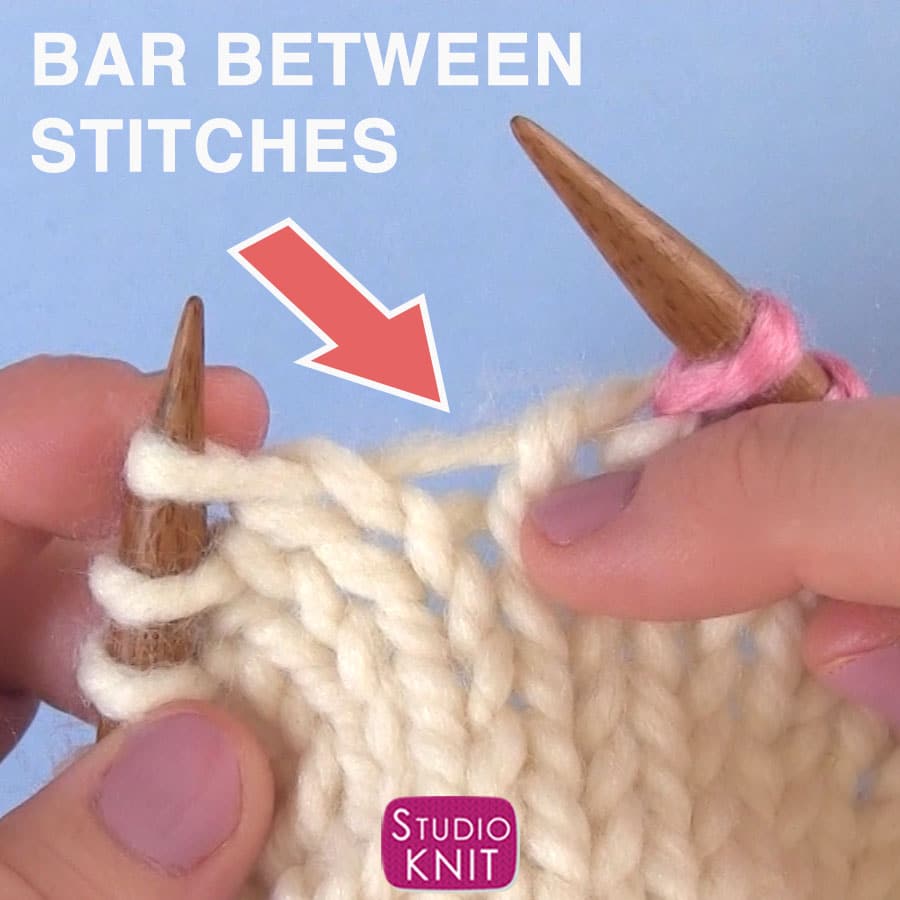Knitting M1 Increase
Knitting M1 Increase - 10k views 1 year ago knitting increases. The m1r knitting increase is. The only difference is the direction of the increase. Web the make one is a commonly used knitting increase, but there are 6 variations of this stitch: Make one increases are created by working into the strand in between two stitches on your knitting needles. Web sheep & stitch. The m1r slants to the right, while the m1l slants to the left. Make 1 is the most invisible increase in knitting. M1, m1l, m1r, m1p, m1pl, m1pr. Learn how to increase 1 stitch by picking up the horizontal loop before next stitch. Web make 1 (m1) increase. You’ll find this increase used in many different types of projects, like fingerless mitts or mittens. This method must be worked between two stitches. Web both the m1r and m1l are techniques that will increase your knitting by one stitch. Insert the left needle from front to back under the horizontal strand of yarn between. 1.1m views 13 years ago. The most basic way to increase is knitting in. A useful increase is the 'make 1'—usually abbreviated to 'm1' in patterns. Web what does m1 mean in knitting? It can lean to the left or the right, and can be made on the knit or the purl side. This method must be worked between two stitches. 1.1m views 11 years ago. 124k views 6 years ago how to knit. Make one increases are created by working into the strand in between two stitches on your knitting needles. Web what does m1 mean in knitting? 124k views 6 years ago how to knit. To get more stitches in knitting, an increase is needed. The most basic way to increase is knitting in. These increases are mirror images of each other, as one leans to the left and the other to the right. This tutorial explains an increase method that involves lifting and working into the. These increases are mirror images of each other, as one leans to the left and the other to the right. This method must be worked between two stitches. This tutorial explains an increase method that involves lifting and working into the bar between two stitches. Make one increases are created by working into the strand in between two stitches on. In this video, jen lucas explains how to work both the make one left (m1l) and make one right (m1r). Lift that strand back to your left needle coming in from the front. 1.1m views 13 years ago. You’ll find this increase used in many different types of projects, like fingerless mitts or mittens. Make one increases are created by. Therefore, it cannot be made at the beginning or end of the row. You work the m1 into the bar between two stitches on your needles. Insert your left needle into the loop you just lifted coming in from the front. Learn how to increase 1 stitch by picking up the horizontal loop before next stitch. An m1 increase creates. You work the m1 into the bar between two stitches on your needles. Web make 1 (m1) increase. As a result, there needs to be at least one stitch to the left and the right. In this video we'll take a quick look at the m1 (make one) increase in knitting. Learn how to increase 1 stitch by picking up. M1l, k2tog, m1r, ssk, kll, k2tog tbl, kll, sspk, krl. Web sheep & stitch. Make one increases are created by working into the strand in between two stitches on your knitting needles. M1 is a standard knitting increase. Insert the left needle from front to back under the horizontal strand of yarn between the stitch just worked and the next. 1m views 5 years ago knitting essentials. In this video, jen lucas explains how to work the make one (m1) increase. This tutorial explains an increase method that involves lifting and working into the bar between two stitches. Pull your two needles apart a bit. Web emily wessel knitting techniques increases, the simple collection. Usually, this is done on the right side. 1.1m views 13 years ago. Web a make one increase (m1) is a standard increase found in knitting patterns. M1, m1l, m1r, m1p, m1pl, m1pr. Make one increases are created by working into the strand in between two stitches on your knitting needles. This tutorial explains an increase method that involves lifting and working into the bar between two stitches. Therefore, it cannot be made at the beginning or end of the row. A useful increase is the 'make 1'—usually abbreviated to 'm1' in patterns. This method must be worked between two stitches. 1m views 13 years ago knitting techniques. You work the m1 into the bar between two stitches on your needles. 10k views 1 year ago knitting increases. Web make 1 (m1) increase. Pull your two needles apart a bit. Lift that strand back to your left needle coming in from the front. Web the make one is a commonly used knitting increase, but there are 6 variations of this stitch:/M1_4-5ad10f1418ba010037438ea3.jpg)
How to Increase Stitches with Make One (M1) in Knitting

Make One Knitting Increase (M1, M1L, M1R) Studio Knit

How to knit the m1 increase (both m1R & m1L) YouTube

M1L Knit Increase Tutorial YouTube

M1R Knit Increase Tutorial YouTube

Everything You Need to Know to M1 in Knitting love. life. yarn.

Make One Knitting Increase (M1, M1L, M1R) YouTube
![How to M1L and M1R Knitting increases without the confusion [+video]](https://nimble-needles.com/wp-content/uploads/2020/04/make-one-right-2-1024x684.jpg)
How to M1L and M1R Knitting increases without the confusion [+video]

How to knit Increase (M1 Make 1) tutorial YouTube

Technique 7 Increasing M1 (Knit Row) YouTube
Knitting Increases Can Be Separated Into Three Categories:
Knit Up To The Position Where You Want To Increase.
If You Twist The New Stitch As You Make It, You Avoid Leaving A Hole.
An M1 Increase Creates One New Stitch To.
Related Post: